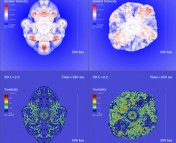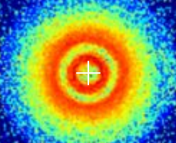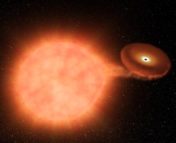Title: Shock Cooling Emission from Extended Material Revisited
Authors: Anthony Piro, Annastasia Haynie, Yuhan Yao
First author’s institution: The Observatories of the Carnegie Institution for Science
Journal: Submitted to the Astrophysical Journal. Open access on arXiv.
Disclaimer: The author would first like to publicly state that Black lives and Black Trans lives matter. Secondly, the author condemns all police brutality against people of color. Lastly, the author recognizes that the writing of this article was performed on the stolen land of indigenous people.
Bright, but not bright enough…
Supernovae are among the most turbulent, luminous explosions in the known universe. These brilliant displays of stellar demise are produced from an amalgam of scenarios such as the merging of compact stars or the violent collapse of a star much more massive than our own Sun. A key facet in understanding the origins of different supernovae comes from their light curve evolution, the change in luminosity over time. However, not all supernova light curves can be explained by identical physics and thus astronomers are always on the lookout for new models to explain peculiar behavior.
The explosion of any star will naturally provide us with a reservoir of energy that is released over the supernova lifetime. So, when trying to understand what is powering a supernova light curve, we have the following sources of energy at our disposal: (1) the decay of radioactive isotopes such as nickel that are synthesized in the intense explosion environment and (2) the initial heat generated by the explosion itself. This isn’t much to work with, but radioactive decay does an exceptionally good job at powering most supernovae!
But what about those “weird” light curves that rise too fast or have two peaks? As shown in Figure 1b/c, such light curves have additional luminosity that normal radioactive decay cannot supply. To solve this problem, the authors of today’s paper present an updated method for powering supernovae through a process known as shock cooling emission (SCE), which is capable of releasing the extra energy needed to match observations. Awesome! But how does it work? To understand this relatively complex physical mechanism, bear with me through a belabored but hopefully convincing analogy.
What a Shock!
As a star explodes, a rapidly moving shockwave will emerge from the surface of the star and blast off into space, typically unimpeded. The shockwave (red arrows in Fig. 2b) is carrying its own supply of energy, and if we place some gaseous material in front of it, the shock will deposit energy into that material during the collision. The gas or “extended material” involved in the collision is shown in grey in Figure 2b and can be the outer layers of a star that were shedded right before the explosion. This scenario is much like a boxing match: the shockwave is the powerful fist of one boxer that slams violently against the face (the extended material) of another. BLAM!
In both situations, the impact will impart energy and heat; this interstellar punch causes the extended gas to rapidly expand, much like the swelling of the recently punched boxer’s head. But now both bruised entities need to cool down after this brutal attack: like the boxer erupting in howls of pain and bodily fluids, the extended stellar material will spew brilliant photons into space. And so, we now have a convenient mechanism for creating the excess luminosity seen in weird supernova light curves!
In today’s paper, the authors explore how shock cooling of extended material can naturally explain the double-peaked light curve of supernova (SN) 2016gkg as well as the recently discovered, extremely fast-rising SN 2019dge. SCE has been proposed previously to explain double-peaked light curves, but the authors update the analytic expressions of how it is derived to account for the density structure of the extended stellar material that the shockwave plows into.
If the Model Fits…
Figure 2a shows the luminosity, temperature and radius of the supernova as a function of time and demonstrates that generating light through SCE is highly dependent on the density profile of the extended material. By breaking up the extended material into distinct shells and then defining the emission based on different regions, the author’s improve upon the past formulas used to describe a supernova light curve via SCE.
The authors’ method proved highly successful in fitting the fast-rising light curve of SN 2019dge as well as the explosion’s evolution in temperature and radius. Their novel approach not only improves upon past SCE formulas but is also just as accurate as numerical modeling done by computer simulations of shock cooling. The analytic expressions outlined in today’s paper will serve as a fantastic new tool for observational astronomers who need to model strange supernova light curves but do not have access to a supercomputer capable of numerical simulations.




